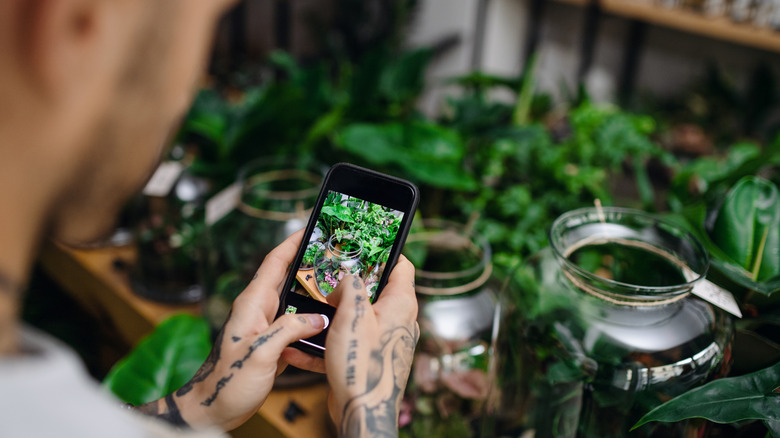Your Dream Plant May Be AI-Generated. Here's How To Tell The Truth
Picture this: You're scrolling through your social media feed and are stopped in your tracks by the most stunning looking plant you've ever seen. It's hailed as a brilliant new variety, and the link leads you to a seller who is offering seeds for this beauty. But before you rush to your local nursery or purchase those seeds online, take a moment and consider whether the plant is real or just an AI-generated image. So, how do you tell the truth? The simple answer is, if the plant looks too perfect, has an odd or unlikely structure or anatomy, or is just not plausible, like a rainbow colored rose or a blue sunflower, you can be pretty sure the image is AI-generated.
The practice of unscrupulous people selling seeds for jet black peonies or blue dahlias has been going on for many years, even before AI images became mainstream. While there are a few stunning black flowers you can grow from seed, peonies aren't one of them. You'll often find these sellers on common online marketplaces, and the seller's name won't be easily recognizable as a reputable seed supplier. For example, a listing for a tie-dyed blue hibiscus with pink edges is definitely using an edited or AI image because such a plant simply doesn't exist. So, even though there are plenty of stunning and unique plants to add to your garden, beware of those AI-generated images.
How to distinguish a fake AI plant image from a real one
With practice, it's not that difficult to distinguish a fake plant image from a real one. You just need to do a little research. If you're using an Android phone or Chrome OS, try using a Google Lens reverse image search whenever you come across a picture of a unique plant or flower that simply takes your breath away. This lets you use Google to identify plants and other images for free. If you're an Apple user, their Visual Look Up feature works the same way. Scan the results, and see whether any of the pictures can be linked to a well-known seed seller or plant breeder. If all you find are marketplace listings or social media posts, you can be almost sure the plant doesn't exist, or at least it isn't for sale yet.
Another thing you'll want to look for is the botanical or scientific name. If this is absent or doesn't match the plant you're looking at, then you'll know straight away that something is wrong. What you'll generally find is that new cultivars will be patented and displayed with the botanical name first and the cultivar following it in single quotes. Additionally, be suspicious if anyone claims to have seeds for sale for species or cultivars which are generally propagated asexually from cuttings or bulblets. It pays to remember that nature is perfectly imperfect, and plants will always have variations in flower and leaf colors and shapes. It takes plant breeders a lot of work and many generations for seeds to produce predicable, stable results.

